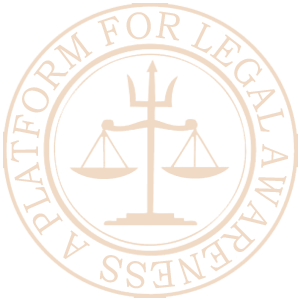Introduction
The NEP, 2020 has been introduced on July 29, 2020, to make India a global knowledge superpower repealing the previous policy of 1986. This new policy promotes education with more practical knowledge. According to an economic survey, India spends 4.6% of the GDP on education which this policy aims to increase to 6% by investing more in the education sector.
Key highlights
a) Ministry of Education:
In order to focus more on education and learning, the Government deemed necessary to change the name of the Ministry of Human Resource Development to the Ministry of Education.
b) School education structure:
The new policy repealed the previous 10+2 structure and provides a new 5+3+3+4 structure and divided as:
1. The Foundational Stage (in two parts, that is, three years of Anganwadi/pre-school + 2 years in a primary school in Grades 1-2; both together covering ages 3-8) –
This stage focuses on flexible learning and more activity-based learning. It also includes implementation of the Early Childhood and Education Curriculum (ECCE) to be taught only by ECCE qualified teachers.
2. Preparatory Stage (Grades 3-5, covering ages 8-11) –
This stage focuses on activity-based learning with the slight introduction of books focusing on interactive classroom sessions to make a solid foundation of reading, writing, speaking, art, Physical Education, science, languages, and mathematics. The teaching till grade 5 will be mandatorily done in the mother tongue.
3. Middle Stage (Grades 6-8, covering ages 11-14) –
This stage introduces subject teachers with in-depth studies of subjects. The learning will focus more on experimentation than theoretical knowledge.
4. Secondary Stage (Grades 9-12 in two phases, i.e., 9 and 10 in the first and 11 and 12 in the second, covering ages 14-18)-
This provides flexibility to students while choosing subjects, no rigid stream systems. The exams will be conducted twice a year on a semester basis.
c) Report Cards:
The reports cards will now not only include grades but also the skill set of the child will be assessed by a new central assessment centre, Performance Assessment, Review, and Analysis of Knowledge for Holistic Development (PARAKH) will be established.
d) Introduction of Vocational knowledge:
Students will have ten bagless days during which they will be taught vocation of their choice. It also provides for students to learn coding from class 6 onwards.
e) Minimum qualification:
By 2030, 4 years integrated B.Ed degree to be made compulsory for teachers.
f) Academic Bank of Credit:
The NEP provides for multiple entries and exit program for students, if any student leaves college and wishes to complete his degree in the future, then his credits will be stored in Academic bank of credit for future use.
g) Bachelor degree:
Every Bachelor degrees will be of a period of 4 years, and the exit option is as follows:
1. If any student leaves college after one year, he will be provided with a certificate for the same.
2. If any student leaves college after two years, he will be provided with a diploma for the same.
3. If any student leaves college after three years, he will be provided with a degree for the same.
4. This scheme ensures that no time of the student is wasted and his education must be acknowledged.
h) Foreign study:
The NEP provides that the world’s top 100 universities will be allowed to set up their campus in the country and a specialized law will be provided for regulation of these universities.
i) Higher Education Commission of India (HECI):
This a uniform commission set up to regulate all the higher education except medical and legal education. All the public and private universities will have to abide by the norms set by the HECI. HECI will work along with its four independent wings, namely,
a) National Higher Education Regulatory Council (NHERC) b) General Education Council (GEC), c) Higher Education Grants Council (HEGC) d) National Accreditation Council (NAC)
j) National Research Foundation (NRF):
The policy provides for establishing NRF to encourage research in every discipline in the country. The NRF will fund, recognize outstanding research, and act as a liaison between researchers and the relevant department of the Government.
k) Integration of technology:
The NEP provides to integrate technology in the education system and aims to establish the National Educational Technology Forum for a free flow of exchange of ideas relating to the inclusion of technology in the education sector. It also aims to set up a body to create digital infrastructure and content for imparting education. The primary purpose of integrating technology is to improve classroom processes.
l) Gender-Inclusion Fund and Special Education Zones(SEZs):
This fund is made by the central Government to ensure that no child of any gender is left behind from getting the education and will be made available to the state government for better implementation. This fund is mainly set-up for girls and transgender students.
The area where a large population comprises Socio-Economically Disadvantaged Groups (SEDGs) will be declared as SEZ, and here, the schemes and policies will be implemented to the maximum with extra efforts to change their educational plight.
n) Students with disabilities:
Specialized attention will be given to students with hearing impairment will be benefited by a high-quality module developed by NIOS to teach Indian sign language and assistive devices will be provided to students to enhance their learning.
o) Professional Education:
Technical, healthcare, legal, and agriculture institutes must aim to become multi-disciplinary institutions.
Conclusion
The NEP 2020 repealed the decades-old education policy. India was in dire need to implement a new education policy in order to encourage not only theoretical knowledge but practical knowledge at all fronts. This New Education Policy relieves students from the burden of excelling in subjects but also provides them a chance to excel in other activities. This is a considerable step of the Government to bring India at par with other leading nations across the globe.
Disclaimer: Kindly note that the views and opinions expressed are of the author, and not Law Colloquy.
